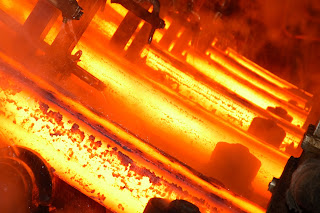Reprinted with permission from BriskHeat
Download the PDF version of this application note here.
The cold weather can wreak havoc on exposed valves, pumps, pipes, bearings, filter housing, and other industrial objects. When these parts freeze, they typically become unusable, and in extreme conditions damaged. The freezing and damage causes extended and unwanted downtown and in some cases, costly repairs. Production teams cannot afford to allow the weather to restrict their productivity, and need a solution to remedy these problems quickly and safely.
De-Icing and Thawing Solution
BriskHeat’s HSTAT silicone rubber heating tape is the perfect tool for providing temporary heat to quickly get frozen systems back up and running and reduce downtime. When confronted with a stuck or frozen system, wrap the HSTAT heating tape around the frozen part, set the temperature, and allow the heat to quickly thaw/unfreeze the part. The easy-to-use portable heat tape provides instant localized heat to quickly de-ice parts efficiently and safely. When finished, the HSTAT heating tape is easily rolled up and kept in a toolbox or cabinet, ready for use again when needed.

HSTAT heating tapes are available in a variety of lengths and have a thin design for maximum
versatility, and extreme flexibility. They can be fit around nearly any shape or size component. A built-in adjustable controller regulates the temperature which can provide intense heat of up to 450°F (232°C). HSTAT heating tapes offer true performance and reliability in even the coldest conditions down to -60°F (-51°C). The easy to use plug-and-play design requires no need for special wiring. They feature BriskHeat’s patented, multi-stranded heating element for ultimate flexibility and reliability.
Additional Uses
HSTAT heating tapes have many additional uses. These include process control needs where a unique process requires heat, or for viscosity related needs where heat is used to reduce viscosity and increase flow, and more. They are used as a temporary heat source when needed or as a permanent installation. HSTAT heating tapes are used to heat all types of objects that require elevated temperatures.
For more information, contact Alliance Technical Sales. Call them at 630-321-9646 or visit their web site at https://alliancets.com.






